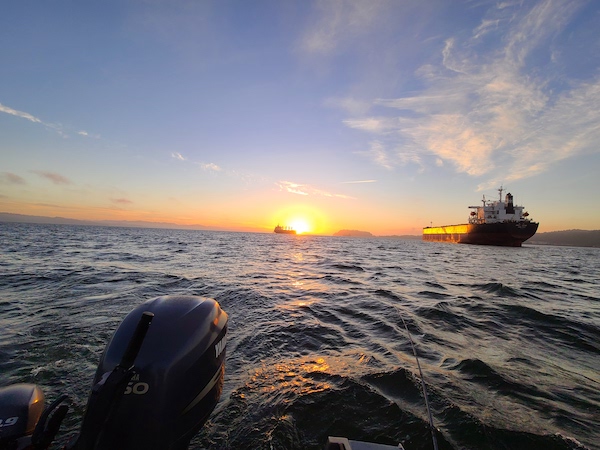
Lower Columbia Managers To Talk Salmon Fisheries Next Week
Columbia salmon managers will meet next Tuesday afternoon to talk about recreational fisheries on the lower river.
It’s a sliver of hope for eventually getting back on the water in some form following last week’s sudden Chinook, coho and steelhead shutdown from Buoy 10 to Bonneville.

The news came during today’s Columbia River Compact call on tribal fisheries in the gorge pools.
Sensitive to the situation that has sidelined anglers during a traditionally strong part of the fall fishery, state managers took time to talk through why they had to close the lower river after allowable impacts were exceeded on natural-origin tules, a fall Chinook stock that returns to tributaries below the dam and is federally listed but swims alongside much more plentiful and angler-preferred upriver brights, coho and A- and B-run steelhead.
ODFW’s Tucker Jones stated that there are some suggestions the overall tule run is coming in larger than predicted – counts at Bonneville are above expectations and Spring Creek Hatchery managers say they are on track to meet broodstock goals and were OK with minimizing the sanctuary around the facility for the tribal commercial gillnet fishery.
But given its Endangered Species Act status and requirements to get a federal fishing permit, lack of a way or path to update the forecast inseason, and natural run timing variability, Jones added it was “pretty impossible” in this moment to do anything.
Basically, sport anglers caught 109 percent of the preseason allocation of wild tules, with the lion’s share of that impact coming from Buoy 10, where there was some pretty damn good fishing in mid- and late August.
That led to last week’s sweeping 145-river-mile closure. Anglers had hoped managers could carve out coho opportunity at the mouth of the river and upriver brights in the western gorge, but even those would have continued to drive up tule impacts. It’s a bitter pill to swallow with fall Chinook counts at Bonneville 55,000 fish ahead of the 10-year average.

The National Marine Fisheries Service’s Jeremy Jording was on today’s call and he noted that similar to numerous coastal stocks, runs returning to rivers below Bonneville aren’t updated inseason.
ODFW’s Jeff Whisler also stated that a wild tule inseason update tool isn’t included in the federally authorized fishing plan for Columbia fall salmon.
And Stuart Ellis of the Columbia River Intertribal Fish Commission stated that Spring Creek Hatchery tule returns don’t really tell managers much about wild tules headed to spawn in Lower Columbia tribs.
So, essentially anglers have to wait for the less desirable (at least in the river) fall Chinook stock to clear the hell out already, making for frustration the whole way around about a salmon that’s been “our main beast in the closet the past few years,” as guide Bill Monroe Jr. put it. He reported having moved well upstream and found good fishing with lots of jumpers.
Next week’s Columbia River Compact call is scheduled for Tuesday, September 13 at 3 p.m.
